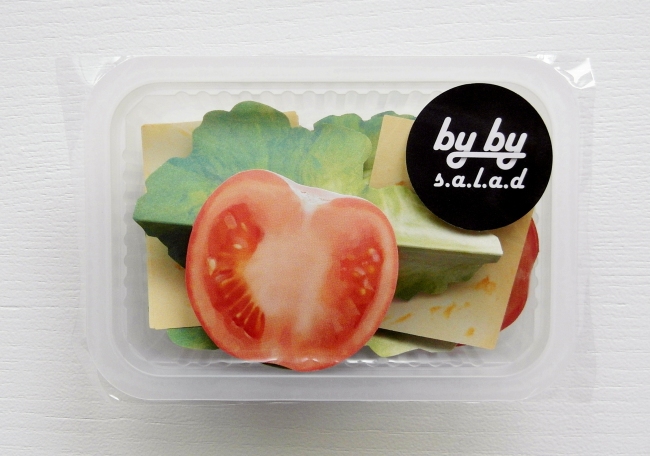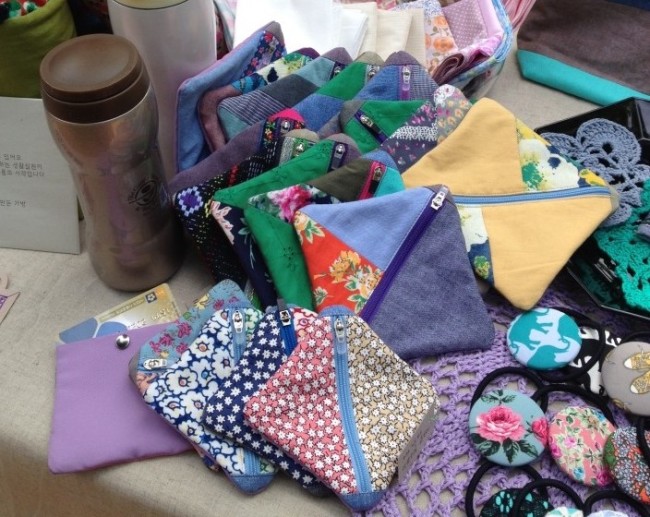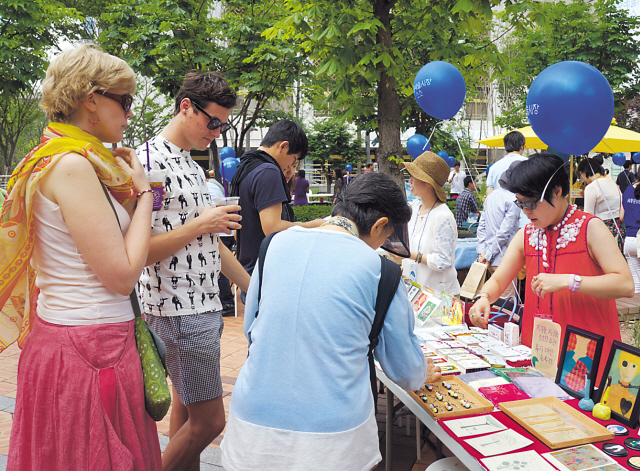Life’s little luxuries at outdoor art event
Sejong Art Market SoSo offers affordable items for visitors, sales opportunities for local artists
By Korea HeraldPublished : June 28, 2013 - 20:15
Seoul’s Gwanghwamun area attracts many visitors throughout the year, as it is located near the beautiful Gyeongbokgung Palace and the charming Samcheong-dong, which boasts a tasteful mix of traditional hanok buildings, cozy cafes and contemporary art galleries.
A major spot in the area is Sejong Center of the Performing Arts, which is just across the street from Kyobo Book Centre, one of the biggest bookstores in the country. Most people visit the venue for big-name operas, musicals and ballets, and not all of them may be aware that it also has a spacious back garden.
Since May, the garden has been hosting an art and design market called Sejong Art Market SoSo on the first and third Saturday of every month.
A major spot in the area is Sejong Center of the Performing Arts, which is just across the street from Kyobo Book Centre, one of the biggest bookstores in the country. Most people visit the venue for big-name operas, musicals and ballets, and not all of them may be aware that it also has a spacious back garden.
Since May, the garden has been hosting an art and design market called Sejong Art Market SoSo on the first and third Saturday of every month.

“The term ‘soso’ means tiny and small, but also means to wander around slowly,” said Lee Hye-jung, one of the organizers of the market. “So we wanted to use our back garden as a space where people can chill and relax. We try to think of the whole event as a piece of art.”
For each edition, about 60 artists and designers gather in the garden, while live music fills the air. Saturdays are perfect for the vibrant event, says Lee, as most of the artists are busy during weekdays. “We also wanted to attract families with young children,” she said. “Gwanghwamun receives a lot of them on weekends, so we wanted them to enjoy what we offer.”

The Sejong Youth Harmony Orchestra, whose members are teenagers from disadvantaged families, performs scores by Ennio Morricone, as visitors peruse art and design items ― from pieces of jewelry to tableware to postcards to iPhone cases ― displayed on small tables. While visitors have fun making their purchases, the participating artists tell stories of their own, their works reflecting their lives.
For designer Kim Jeong-eun, the market is a way to share her newly adopted, environmentally friendly lifestyle. Kim, who majored in animation, started creating items made using cotton such as handkerchief cases, wallets and fashion buttons after going through a minor health crisis three years ago. “I had a rash all over my body and was sent to the emergency room,” the designer told The Korea Herald.
“I was fine after a day or two, and then it happened again. Doctors couldn’t really figure out what was wrong, as the test results said I was fine. So I took traditional Korean medicine for a year, and tried to eat healthy. And as I began to seriously think about what I eat and where it comes from ― I used to love instant noodles ― it was unavoidable to think about the environment.”

Looking at her playful items, such as the handkerchief case in cotton fabric, it’s easy to guess her lifestyle. The case has a separate pocket made of waterproof fabric. “Switching hankies for tissues certainly is one of the ways to show that you care about the environment,” she said. “But carrying your used, wet hankie may not be something that you want to do every day. That’s why my case has a separate, waterproof pocket, where people can carry their used hankies separately.” Kim’s products can be seen at www.chiguya.com.

The market also features special notepads created by designer Oh Se-hyeon. The product, named “Eleddong Notebook,” (available at www.eleddong.com) ― “Elephant Poop Notepad” in Korean ― allows its users to rip out its pages and place them back the way they were without using glue or tape. Oh, who majored in fine art in college and spent some seven years publishing catalogs for art galleries, thought about creating the special notepad after reading a German children’s story about an aging elephant that has a hard time excreting.
“It’s all about letting out what’s inside you,” Oh told The Korea Herald.
“And I think the best way to do that is to grab a pen, write everything that’s on your mind and just let your hand flow. When you are in love with someone, you often find yourself writing down his or her name on a piece of paper. Sometimes you are embarrassed by what you wrote and rip the pages out of your notepad or diary, but it doesn’t mean they are insignificant.”
Meanwhile, designer Oh Bo-yeon presents what looks like a packaged salad. It is in fact a pile of memo notes, each looking like a vegetable. “One of my fellow designers came up with Post-it notes that look like tree leaves, and I thought they were interesting,” Oh said. “And later I went grocery shopping and saw this bowl of salad. It was packaged really well; it was almost like looking at a design item. So I combined the sticky notes that look like leaves with salad packaging.”

The designer worked for a furniture company for three years before setting up his own design house. “I eventually want to do furniture design of my own,” he said. “But I’m beginning with things that are small, such as the memo notes and fridge magnets.” His works can be seen at www.byby.kr.
The market is held every first and third Saturday in the back garden of Sejong Center for the Performing Arts until Oct. 19. It is open from 3 p.m. to 8 p.m. The market won’t be held in August due to the heat, and is canceled if it rains.
Applications are open for artists who wish to participate. Its July editions will feature live jazz music, according to the organizers. For more information on Sejong Art Market SoSo, call (02) 399-1077 or visit www.facebook.com/sejongartsmarket.
By Claire Lee (dyc@heraldcorp.com)
-
Articles by Korea Herald










![[Weekender] Geeks have never been so chic in Korea](http://res.heraldm.com/phpwas/restmb_idxmake.php?idx=644&simg=/content/image/2024/05/16/20240516050845_0.jpg&u=)







![[Herald Interview] Byun Yo-han's 'unlikable' character is result of calculated acting](http://res.heraldm.com/phpwas/restmb_idxmake.php?idx=652&simg=/content/image/2024/05/16/20240516050855_0.jpg&u=)
